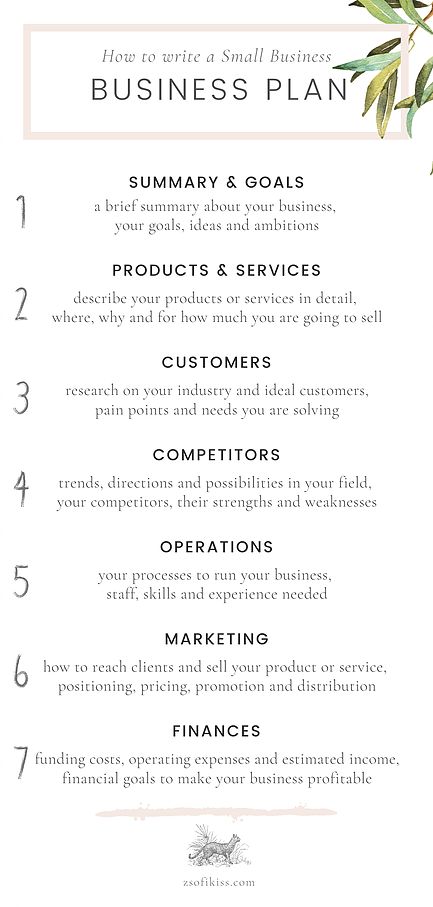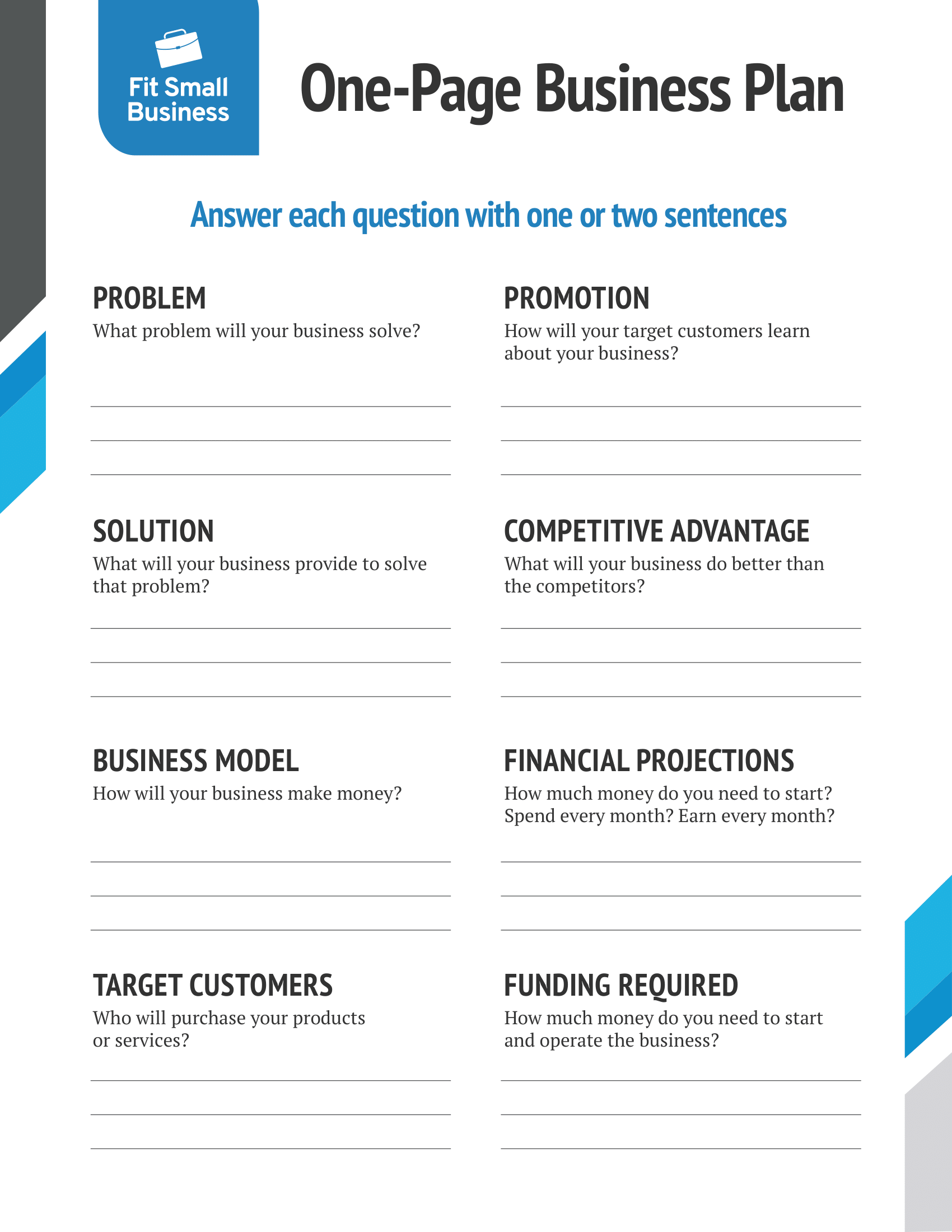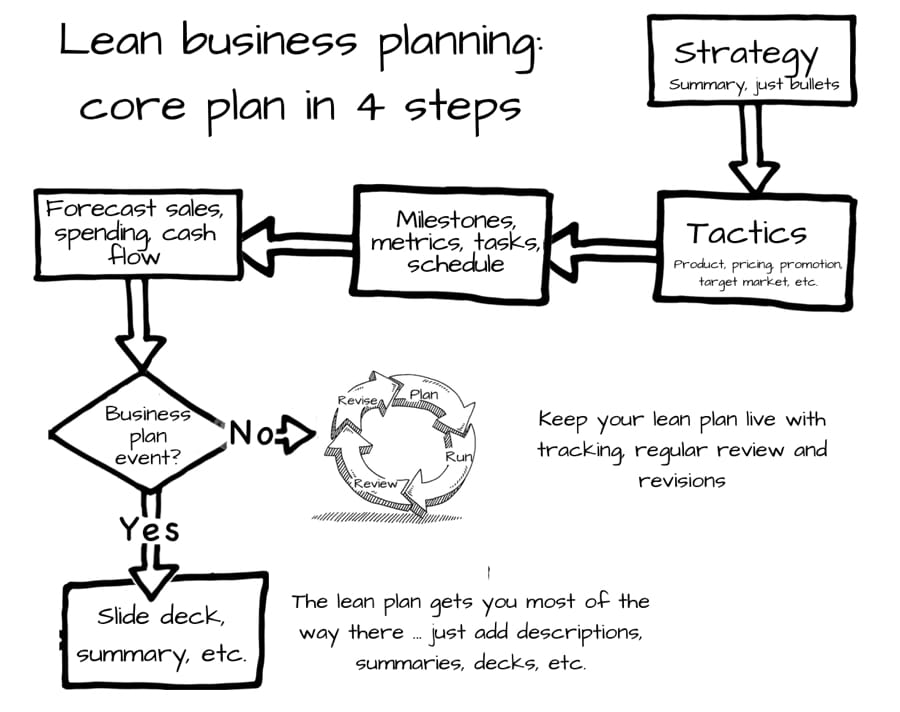To write a business plan for a small business, first identify your audience and purpose, then research and analyze your market, determine your unique selling proposition, outline your company structure, and develop financial projections. Writing a business plan is a crucial step for any small business owner looking to start or grow their enterprise.
A well-written plan can help secure funding, attract investors, and guide decision-making. However, the process of creating a business plan can seem daunting. As a writer, it’s important to remember that a business plan is a communication tool meant to convince others of the viability of your business idea.
With that in mind, it’s important to carefully consider your audience and purpose, research and analyze your market, determine your unique selling proposition, outline your company structure, and develop financial projections. This guide will provide a comprehensive overview of these steps and more.
Importance Of A Business Plan
For small business owners, having a well-written business plan is crucial for success. It helps to outline the company’s goals, target market, competition, and financial projections. Writing a business plan also helps to identify potential roadblocks and develop strategies to overcome them.
Starting a small business requires a lot of effort and research, and creating a business plan is an essential part of the process. A business plan will help you define your business, set goals and objectives, develop a marketing strategy, secure funding, and evaluate your progress. It serves as a roadmap for your business, providing a clear understanding of your goals and how you plan to achieve them. In this section, we’ll explore some of the key elements of a business plan, beginning with defining your business.Defining Your Business
The first step in writing a business plan is to define your business. This involves identifying your product or service, target market, competition, and unique selling proposition. The more specific you are in this section, the easier it will be to develop your plan. It’s important to consider your long-term goals, as well as any challenges you may face along the way.Setting Goals And Objectives
Once you’ve defined your business, the next step is to set goals and objectives. These should be specific and measurable, such as increasing revenue by 20% in the next year or expanding your product line into a new market. Your goals should align with your long-term vision for your business, and be broken down into smaller, achievable objectives.Developing A Marketing Strategy
Marketing is a crucial component of any business plan. In this section, you should outline your target market and how you plan to reach them. This may include advertising, social media, email marketing, or other tactics. It’s important to consider your budget and resources when developing your marketing plan.Securing Funding
In order to start or grow a small business, you may need funding. This section should outline your financial needs and how you plan to raise the necessary funds. This may include loans, grants, or investments from friends or family. Be sure to include a detailed financial plan, including projected revenue and expenses. In conclusion, a business plan is an essential tool for any small business owner. It outlines your goals and objectives, defines your business and target market, and helps you secure the funding you need. By taking the time to develop a comprehensive business plan, you’ll be setting yourself up for success.
Credit: www.pinterest.com
Research And Analysis
Crafting a business plan can be overwhelming for small businesses, but research and analysis are crucial components. Take time to identify your target market, competition, and financial projections to create a comprehensive plan. Remember to keep it concise, unique, and easy to understand for potential investors and lenders.
Before starting a small business, writing a business plan is crucial. It helps in organizing thoughts, setting achievable goals, identifying potential obstacles, and laying out a plan to overcome them. One of the essential parts of a business plan is research and analysis. It gives a clear picture of the market, competition, and opportunities that a business can leverage. Let’s delve into the three crucial analysis aspects that you need to include in your business plan: Market Analysis, Competitor Analysis, and SWOT Analysis.Market Analysis
Identifying your target market is an essential part of starting a small business. Through market analysis, you will learn about your potential customers, their demographics, needs, and behaviours. It is a process of gathering critical information about the market, industry trends and your target audience. You can use different market research tools such as surveys, focus groups, and secondary data to gain insights. Your market analysis should outline the following: – Market size and potential growth – Customer profiles and needs – Industry trends and market share – Economic and political factors that impact the marketCompetitor Analysis
Competitor analysis helps you to understand your competition, their strengths, and weaknesses. It gives you insights into what your competitors are doing, their strategies and how they are positioning themselves in the market. It is a crucial step in identifying any gaps in the market and differentiating your business. Your competitor analysis should outline the following: – Direct and indirect competitors – Competitors’ products and services – Competitors’ strengths and weaknesses – Pricing strategies – Sales and marketing tacticsSwot Analysis
A SWOT analysis helps you to identify your business’s strengths, weaknesses, opportunities, and threats. It is a comprehensive analysis that considers both external and internal factors that impact your business. It is an excellent tool for determining what you do well and what you need to improve. Your SWOT analysis should outline the following: – Your strengths and weaknesses – Opportunities and threats in the market – Potential risks and challenges – External and internal factors impacting your business In conclusion, research and analysis are vital components of a successful business plan. By conducting a comprehensive market analysis, competitor analysis and SWOT analysis, you will lay the foundation for a business that can thrive in the market. Use the insights you gain from research and analysis to create strategies that will help your business succeed.Business Model And Structure
To write a business plan for a small business, it’s important to understand the business model and structure. This includes defining the target market, identifying the product or service offered, and outlining the revenue streams. A well-crafted business plan can help small businesses secure funding, attract customers, and achieve long-term success.
Once you have determined the market and competition for your small business, it’s time to dive into the business model and structure. This section of your business plan will outline the products or services you’ll offer, how you’ll price your offerings, the revenue streams you’ll generate, and the legal structure of your business.Description Of Products And Services
The products or services you offer will be the backbone of your small business. It’s important to describe in detail what you’ll offer and how it will benefit potential customers. Consider including a breakdown of the features, benefits, and unique selling points of your offerings.Pricing Strategy
Determining a pricing strategy for your products or services can be a delicate balance. You want to be competitive in the market while still making a profit. Consider breaking down your pricing strategy into different tiers or options to appeal to a broader range of customers.Revenue Streams
Understanding where your small business will generate revenue is crucial to its success. Think about all the potential sources of income, including product sales, service fees, subscriptions, advertising, and any other streams unique to your industry. Consider outlining potential revenue streams for the short and long terms.Legal Structure
Your legal structure will define your business’s status, taxation, and liability. There are several legal structure options you can choose from, such as sole proprietorship, partnership, LLC, S Corporation, or C Corporation. Consider consulting with a legal expert or small business advisor to determine which legal structure makes the best sense for your business. In conclusion, understanding your business model and structure is essential when writing a business plan for your small business. By outlining your products or services, pricing strategy, revenue streams, and legal structure, you’ll have a clear vision for your company’s direction and increase its chances of success.Marketing And Sales Strategies
Crafting a business plan for a small business requires strategic planning of marketing and sales strategies. By identifying target audiences, outlining unique selling propositions, and defining marketing tactics for each channel, businesses can create a clear roadmap for growth and success.
When it comes to writing a business plan, marketing and sales strategies play a crucial role in the success of a small business. In this article, we will discuss the key elements that you need to include in your business plan regarding marketing and sales strategies. Let’s get started!Target Market
Identifying your target market is a critical step in developing an effective marketing strategy. It’s important to understand who your customers are and what they want. Start by conducting thorough market research to gain insights into your target audience. Ask yourself the following questions to help determine your target market:- What age group are my customers?
- Where do they live?
- What are their interests and behaviors?
- What are their pain points and needs?
Advertising And Promotions
Effective advertising and promotions can help you reach your target audience and increase brand awareness. Some popular advertising channels include social media, online ads, radio, television, print media, and direct mail. When selecting advertising channels, consider your target audience, advertising budget, and business goals. Promotions can include discounts, giveaways, loyalty programs, and referral programs. These can help generate new customers and incentivize repeat business.Sales Strategy
Your sales strategy outlines how you plan to sell your product or service to your target market. Consider the following strategies to increase sales:- Direct sales: Sell products or services directly to customers through your website, store, or sales representatives
- Distribution sales: Use intermediaries, such as wholesalers or retailers, to distribute your products or services
- Online sales: Sell your products or services online through your website or e-commerce platforms
- Partner sales: Build partnerships with related businesses to market and sell your products or services to their customers
Financial Projections
Crafting financial projections is one of the essential aspects of writing a business plan for a small business. The section demonstrates the estimated future financial performance of the business, including revenue, expenses, and profit margins. Accurate financial projections can help secure funding and guide business decisions.
Financial projections are essential to any business plan, as they provide an insight into the financial health of a company. In this section, we will walk you through the four key financial projections: Start-up Costs, Cash Flow Statements, Profit and Loss Statements, and Break-Even Analysis.Start-up Costs
Before you begin your business, you will need to budget for start-up costs. Start-up costs include everything from equipment and inventory to office space and legal fees. Creating a list of start-up costs will help you to determine how much money you will need to get your business off the ground and ensure that you have enough funds to cover these costs.Cash Flow Statements
A cash flow statement is a financial document that shows how cash flows in and out of your business over a specific period. This statement can be used to track income and expenses and help you to identify areas where you may need to cut back to ensure that you have enough cash on hand.Profit and Loss Statements
A profit and loss statement, also known as an income statement, is a financial report that shows how much revenue your business generates and how much it spends. This statement is essential to determine the potential profitability of your business and to make informed decisions about spending.Break-Even Analysis
A break-even analysis is a financial evaluation that determines how much revenue your business needs to generate to cover its expenses. By conducting a break-even analysis, you can determine how many products or services you need to sell to break even, allowing you to set realistic goals and make informed decisions that will help you to achieve them. In conclusion, creating financial projections is critical for any small business plan. By taking the time to carefully consider start-up costs, cash flow, profit and loss, and conducting a break-even analysis, you can ensure that your business has a solid financial foundation and is set up for success.
Credit: fitsmallbusiness.com
Implementation Plan
Once you have identified your business goals and analyzed the market and competition, your next step is to create an implementation plan. In this section, you will outline the specific actions you need to take to achieve your goals, along with timelines and responsibilities.
Action Plan
The Action Plan is a list of tasks you need to complete in order to achieve your business goals. Be specific when writing your Action Plan, and include all necessary steps. A well-designed Action Plan will help you stay focused, keep track of your progress, and identify areas that need improvement.
| Action Plan | Tasks |
|---|---|
| Marketing |
|
| Sales |
|
Timelines
Timelines help you manage your time effectively and ensure that you achieve your goals within the specified time frame. Your timelines should be realistic but challenging enough to motivate you and your team to work hard. If you have any external deadlines to meet (e.g., a product launch date), make sure you factor those into your plan.
| Goal | Deadline |
|---|---|
| Develop product prototype | 1 month |
| Launch marketing campaign | 2 months |
| Achieve break-even point | 6 months |
Responsibilities
Responsibilities define who is accountable for each task in your Action Plan. Assigning responsibility helps ensure that everyone knows what they are responsible for and who to go to if they have any questions or problems. Identify the key players in your team, including internal and external stakeholders.
| Action Plan | Responsibility |
|---|---|
| Marketing |
|
| Sales |
|

Credit: timberry.bplans.com
Frequently Asked Questions For How To Write A Business Plan For A Small Business?
How Do I Write A Simple Small Business Plan?
To write a simple small business plan, start with an executive summary describing the business and its mission. Next, outline your products or services, target market, competition, marketing and sales strategies, and financial projections. Make sure to also include an organizational structure and management team.
Keep it clear, concise, and easy to read.
How Do I Write A Business Plan Before Starting A Business?
To write a business plan before starting a business, follow these steps: 1. Research and analyze your industry, competition and market. 2. Determine your target audience, define your products/service offerings, and establish a marketing strategy. 3. Set goals and objectives, make financial projections, and outline operational plans.
4. Write a draft of your business plan and review and revise it multiple times. 5. Get feedback and support from trusted advisors, mentors, or even a business consultant to fine-tune and finalize your plan.
Can I Write A Business Plan Myself?
Yes, you can write a business plan yourself. However, it is important to thoroughly research and identify all aspects of your business, set clear goals and objectives, create a realistic financial plan, and thoroughly edit and review your plan before finalizing it.
Seeking feedback from trusted advisors and utilizing resources such as templates and online guides can also be helpful.
What Are Examples Of A Business Plan?
Examples of a business plan include executive summary, business description, market analysis, marketing and sales strategies, organizational structure, products/services descriptions, financial projections, and funding or investment requests.
Conclusion
To sum up, writing a business plan for your small business is crucial to its success. A well-thought-out and comprehensive business plan serves as a roadmap for your business and provides a clear understanding of your objectives, target audience, financial projections, and competition.
With the tips and guidelines discussed in this blog post, you’re well on your way to creating a winning business plan that will enable you to achieve your entrepreneurial dreams. Remember to keep it concise, informative, and engaging!

